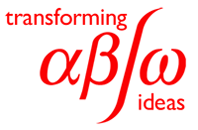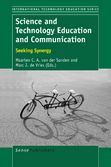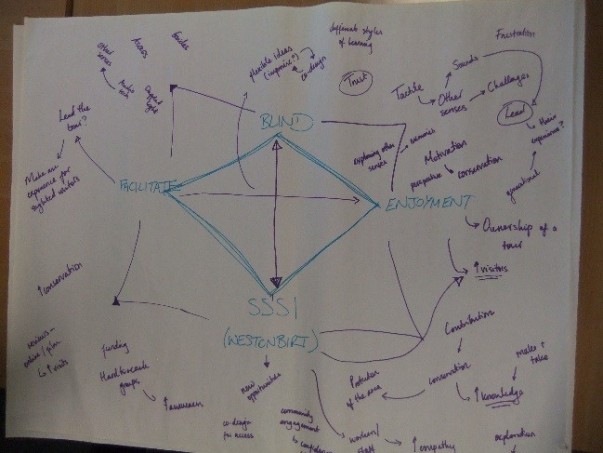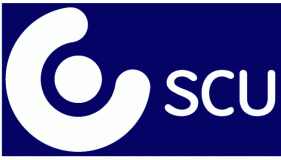Blog Archives
MSc projects: science communication research in the real world
Clare Wilkinson
During our MSc Science Communication at UWE Bristol we focus a lot of effort on supporting students to develop their networking and employability skills whilst they study our modules. That’s one of the reasons why our graduates seem to be pretty successful in finding a job in science communication after studying with us and it also means our students get to meet a wide range of science communication practitioners and academics who are working at the ‘coalface’.
One way in which we build in an opportunity to work with an external organisation is via our Science Communication project module. Since the programme started 15 years ago we’ve had well over 150 students working on projects with our Unit and in 2009 we introduced a specific opportunity for students to conduct their projects in partnership with an external organisation. This has resulted in collaborative projects with organisations and charities including We The Curious, the Durrell Wildlife Conservation Trust, Public Health England, and the British Science Association to name just a few. As our current students complete their projects we spoke to some of the students working with external organisations this year about their experiences.

Anastasia Voronkova
Anastasia Voronkova, joined our programme from her home in Russia in September 2016. Anastasia said ‘in my project, I am analysing Durrell Wildlife Conservation Trust’s, one of the biggest international charities’, Facebook, Twitter and Instagram social media strategies and trying to understand how the audiences on these websites perceive conservation related posts.’ Digital and social media communication have been popular topics for our project students in recent years, and it’s also a space where many organisations are still finding their way, or coming up with contemporary and new approaches to reach audiences.
Anastasia was pleased to have chosen to work with an external organisation, who had been offering ‘great help and support’ alongside her UWE supervisor. Anastasia said her project had also ‘given me a unique opportunity to gain some knowledge about conservation from its active practitioners and to contribute to that field, even if only in the form of a research.’

Lindsey with some of her participants
Lindsey Cooper is a part-time student who began studying her MSc in September 2014 whilst working as an outreach and recruitment officer at Plymouth University. Lindsey has been working with We The Curious (formerly At-Bristol) on her MSc project, which offered exciting opportunities to explore not only the combination of art and science but also the relationship of science centres to underserved audiences, in her case those with physical disabilities. Lindsey said: ‘I have been evaluating a new exhibit called The Box, to see if people with physical disabilities interact and respond to the exhibit in the same way as individuals without a disability.’ The Box celebrates the synergy between art and science, and feature exhibitions and artists that occupy the space where art and science meet.
‘I have really enjoyed the experience of working with an external organisation on my project’, said Lindsey, ‘but involving more individuals has (inevitably) made the process more lengthy and complex. It took me a while to develop my research question and balance what I was interested in with what was useful to the exhibit designers at We The Curious. However, I feel like I’ve ended up with a stronger research question and results than I would have otherwise.’

Ben Sykes on site at Steart Marshes
Ben Sykes was also working whilst undertaking his MSc, though in his case this involved him developing his freelance writing career, following a change of direction after many years working at Research Councils. Ben worked with the WWT Steart Marshes which is a created wetland in Somerset. Ben said ‘this is one of the largest and most ambitious managed coastal realignment projects ever undertaken in the UK’ and the project provided him with a real opportunity to get on site at with the WWT, and to consider the issues they face in ‘communicating the science behind its creation and the ongoing research being conducted there by a consortium of universities.’
Ben described his project as a ‘huge challenge’ communicating in an outdoor, remote environment but by creating three Quick Response (QR) codes which were deployed across the reserve, Ben was able to see some real impacts from his work. Ben continued ‘By linking this to web-based science content, my project resulted in a third of Steart Visitors accessing content on the web and learning something about science. It was a super project to work on.’
Our thanks to all organisations who contribute their time and ideas to work with our students, as well as Ben, Lindsey and Anastasia for their contributions to this blog post. If you are based at an organisation who would like to work with student projects in future please contact Clare.Wilkinson@uwe.ac.uk. Find out more about our Science Communication programmes.
Science Journalism Summer School 2017
Every two years, the Association of British Science Writers (ABSW) hosts its one-day Science Journalism Summer School. The 2017 event took place on 5 July at the Wellcome Trust in London, and I went along as a budding freelance science writer to learn a few tricks of the trade.
I was joined by 135 other delegates on the airy and light sixth floor of the Trust’s superb glass-fronted Euston Road building on one of the hottest days of the year. With me were undergraduates, PhD students, freelancers of many kinds, and established science journalists working for a range of organisations. Oh – and a colleague (Clare Gee) from my Masters course in Science Communication here at UWE! Billed as a 12-hour working day, I indeed arrived for coffee at 9am, and did not depart until 8.30pm after the superb networking session with commissioning editors from a number of science publications, such as New Scientist.
BBC Science Correspondent Pallab Ghosh opened the proceedings, and the format for the rest of the day followed short talks with panel discussion and audience Q&A. We learned about new media trends, particularly around digital news consumption, in the context of the question ‘Where have all the science correspondents/journalists gone?’. ITV’s Science Correspondent Alok Jha extolled the virtues of critical science journalism in the fake news world, asserting the need to communicate conflicts between scientific researchers and cast more light on the imperfections and uncertainties of the scientific endeavour. That doesn’t sit so easily with being a proponent of science, which most of us are.
A session on pitching skills was most revealing, with commissioning editors suggesting that they aren’t receiving enough news pitches (short 250-word pieces) alongside the veritable flood of feature pitches. They were keen to point out that background was largely irrelevant; if the story was good and the source reliable, they’ll take it. And one particularly good tip to remember is that editors often prefer to receive a ‘phonecall, with e-mail used as the follow-up.
The session on investigative reporting left a sense of how good for society the best journalism can be, despite the challenges around funding this type of work in today’s climate. Given the potential risks, freelancers were generally advised to steer clear of investigative reporting!
 Perhaps the highlight for me was the final session on “successful freelancing”. There were personal testimonies of the struggle to get going, to find sources of work, to carve out a niche area of specialisation. Max Glaskin, the successful, award-winning author of the magazine Cycling Science, offered a tremendous insight laced with some dark humour along the way. His successful writing career has allowed him to diversify his sources of income through giving talks, chairing panel discussions and undertaking specialist scientific consultancy.
Perhaps the highlight for me was the final session on “successful freelancing”. There were personal testimonies of the struggle to get going, to find sources of work, to carve out a niche area of specialisation. Max Glaskin, the successful, award-winning author of the magazine Cycling Science, offered a tremendous insight laced with some dark humour along the way. His successful writing career has allowed him to diversify his sources of income through giving talks, chairing panel discussions and undertaking specialist scientific consultancy.
All-in-all, a long but rewarding day, worth every penny. If you want to meet several commissioning editors in one place at one time and establish relationships, then this biennial Summer School is a good investment of your time and money.
You can read my blog, Sykes on Science, at: www.sykesonscience.wordpress.com
Ben Sykes, MSc Science Communication student, UWE
Never say never again…
After my PhD viva in 2004, I promised myself I’d never again study for a qualification. Having gone straight from A-levels through a degree to a doctorate, I felt as if I just couldn’t learn anything more. But a decade later, I found myself at a career crossroads trying to figure out what to do at the end of my maternity leave.
Inspired by my elder daughter’s curiosity, I set up a blog, Simple Scimum, to answer questions about science and nature. Slowly, as the blog gathered followers, my confidence grew; and when one of my daughter’s friends asked if I would answer her science questions too, I knew I had to turn science writing into something more than a hobby.
I began searching for jobs that involved writing about science and quickly realised that a qualification in science communication would be an advantage. So, I googled ‘sci comm Bristol’ and found UWE’s MSc in Science Communication, which sounded brilliant but was more than I could manage whilst working part-time and looking after two young children. However, the Postgraduate Certificate in Practical Science Communication was exactly what I was looking for: a one-year, part-time course with intensive teaching blocks, offering hands-on experience and links to industry. I applied for the September 2016 intake and won a bursary towards my tuition fees: I was going back to university!
I felt nervous about returning to study after such a long break but I knew that this was just the first step along a new career path.
The ‘Writing Science’ module was an obvious choice, with the opportunity to create a magazine and develop a portfolio just too good to miss. I learned the essential elements of journalistic practice and wrote a bylined article for UWE’s Science Matters magazine. But the real highlight was a three-hour workshop on ‘how to write a book’ – I’d love to write science storybooks for children, and came away bursting with ideas, enthusiasm and an action-plan to turn my dream into reality. (Roll on NaNoWriMo…!)
But it was through the ‘Science in Public Spaces’ module that I discovered just how strongly I want to inspire young children and engage them with research. I designed ‘Simon’s Box’ to talk about genetic disease and genome editing with GCSE pupils in local schools. And I had the best time in the Explorer Dome learning about science shows for young audiences. Seeing how to encourage children to learn through stories and play was a fantastic experience and a seminal moment in my desire to become a science communicator.
At times I found it hard to juggle study, work and childcare but the intensive teaching blocks made it easier for me to attend lectures and workshops. I paid for my younger daughter to go to nursery for an extra morning each week and used that time for reading and research. Still, I often found myself studying between 8pm and 10pm, when the kids were tucked up in bed, and I was grateful for 24-hour online access to UWE’s library facilities. But now the hard work is over and I’m just waiting for my final results.
Over the past year, I’ve been part of a supportive cohort of students who are committed to science communication. I’ve developed the confidence to pursue a new career path and given up my old job to become a Research Fellow in UWE’s Science Communication Unit. Before the PGCert, I dreamed of working in science communication but now I’m actually doing it.
Kate Turton
New and notable – selected publications from the Science Communication Unit
The last 6 months have been a busy time for the Unit, we are now fully in the swing of the 2016/17 teaching programme for our MSc Science Communication and PgCert Practical Science Communication students, we’ve been working on a number of exciting research projects and if that wasn’t enough to keep us busy, we’ve also produced a number of exciting publications.
We wanted to share some of these recent publications to provide an insight into the work that we are involved in as the Science Communication Unit.
Science for Environment Policy

Science for Environment Policy is a free news and information service published by Directorate-General Environment, European Commission. It is designed to help the busy policymaker keep up-to-date with the latest environmental research findings needed to design, implement and regulate effective policies. In addition to a weekly news alert we publish a number of longer reports on specific topics of interest to the environmental policy sector.
Recent reports focus on:
Ship recycling: The ship-recycling industry — which dismantles old and decommissioned ships, enabling the re-use of valuable materials — is a major supplier of steel and an important part of the economy in many countries, such as Bangladesh, India, Pakistan and Turkey. However, mounting evidence of negative impacts undermines the industry’s contribution to sustainable development. This Thematic Issue presents a selection of recent research on the environmental and human impacts of shipbreaking.
Environmental compliance assurance and combatting environmental crime: How does the law protect the environment? The responsibility for the legal protection of the environment rests largely with public authorities such as the police, local authorities or specialised regulatory agencies. However, more recently, attention has been focused on the enforcement of environmental law — how it should most effectively be implemented, how best to ensure compliance, and how best to deal with breaches of environmental law where they occur. This Thematic Issue presents recent research into the value of emerging networks of enforcement bodies, the need to exploit new technologies and strategies, the use of appropriate sanctions and the added value of a compliance assurance conceptual framework.
Synthetic biology and biodiversity: Synthetic biology is an emerging field and industry, with a growing number of applications in the pharmaceutical, chemical, agricultural and energy sectors. While it may propose solutions to some of the greatest challenges facing the environment, such as climate change and scarcity of clean water, the introduction of novel, synthetic organisms may also pose a high risk for natural ecosystems. This future brief outlines the benefits, risks and techniques of these new technologies, and examines some of the ethical and safety issues.
Socioeconomic status and noise and air pollution: Lower socioeconomic status is generally associated with poorer health, and both air and noise pollution contribute to a wide range of other factors influencing human health. But do these health inequalities arise because of increased exposure to pollution, increased sensitivity to exposure, increased vulnerabilities, or some combination? This In-depth Report presents evidence on whether people in deprived areas are more affected by air and noise pollution — and suffer greater consequences — than wealthier populations.
Educational outreach
We’ve published several research papers exploring the role and impact of science outreach. Education outreach usually aims to work with children to influence their attitudes or knowledge about STEM – but there are only so many scientists and engineers to go around. So what if instead we influenced the influencers? In this publication, Laura Fogg-Rogers describes her ‘Children as Engineers’ project, which paired student engineers with pre-service (student) teachers.
Fogg-Rogers, L. A., Edmonds, J. and Lewis, F. (2016) Paired peer learning through engineering education outreach. European Journal of Engineering Education. ISSN 0304-3797 Available from: http://eprints.uwe.ac.uk/29111
Teachers have been shown in numerous research studies to be critical for shaping children’s attitudes to STEM subjects, and yet only 5% of primary school teachers have a STEM higher qualification. So improving teacher’s science teaching self-efficacy, or the perception of their ability to do this job, is therefore critical if we want to influence young minds in science.
The student engineers and teachers worked together to perform outreach projects in primary schools and the project proved very successful. The engineers improved their public engagement skills, and the teachers showed significant improvements to their science teaching self-efficacy and subject knowledge confidence. The project has now been extended with a £50,000 funding grant from HEFCE and will be run again in 2017.
And finally, Dr Emma Weitkamp considers how university outreach activities can be designed to encourage young people to think about the relationships between science and society. In this example, Emma worked with Professor Dawn Arnold to devise an outreach project on plant genetics and consider how this type of project could meet the needs of both teachers, researchers and science communicators all seeking (slightly) different aims.
A Cross Disciplinary Embodiment: Exploring the Impacts of Embedding Science Communication Principles in a Collaborative Learning Space. Emma Weitkamp and Dawn Arnold in Science and Technology Education and Communication, Seeking Synergy. Maarten C. A. van der Sanden, Delft University of Technology, The Netherlands and Marc J. de Vries (Eds.) Delft University of Technology, The Netherlands.
We hope that you find our work interesting and insightful, keep an eye on this blog – next week we will highlight our publications around robots, robot ethics, ‘fun’ in science communication and theatre.
Details of all our publications to date can be found on the Science Communication Unit webpages.
Postgraduate Science Communication students get stuck in on ‘Science in Public Spaces’
Emma Weitkamp & Erik Stengler
September saw the lecturing staff at the Science Communication Unit welcoming our new MSc Science Communication and PgCert Practical Science Communication students to UWE and Bristol. It also sees the start of our refreshed programme offering, which includes significant changes and updates to two of our optional modules: Science in Public Spaces and Science on Air and On Screen.
The first three-day block of Science in Public Spaces (SiPS) marks the start of a diverse syllabus that seeks to draw together themes around face-to-face communication, whether that takes place in a what we might think of as traditional science communication spaces: museums, science centres and festivals or less conventional spaces, such as science comedy, theatre or guided trails. Teaching is pretty intense, so from Thursday, 29th September to Saturday, 1st October, students got stuck into topics ranging from the role of experiments and gadgets to inclusion and diversity.
Practical science fair
Thursday, 29th September saw the 13 SiPS students matched with researchers from the Faculty of Health and Applied Sciences. Students were introduced to cutting edge research and have been challenged to think about how this could be communicated to the public in a science fair setting. Each student will work with their researcher to create a hands-on activity which they will have the opportunity to deliver to the public at a science fair to be held during a University Open Day in the spring.
Towards the end of the three days a session on creativity generated intense discussion about how we might judge what creativity is through to practical techniques and tips we might use to stimulate creative thinking. The session included a word diamond (McFadzean, 2000), where groups considered how you might foster engagement and enjoyment amongst blind visitors to the Grand Canyon, how blind visitors could be involved in creating a sensory trail (for sighted people) at an arboretum or how to enable a local community to be involved in decision making around land use that involved ecosystem services trade-offs. Challenging topics that draw on learning from earlier in the week.

After a final session on connecting with audiences, students (and staff) were looking a little tired; three days of lectures, seminars and workshops is exhausting. We hope students left feeling challenged, excited and ready to start exploring this new world of science communication and public engagement and that they find ways to connect their studies with events and activities they enjoy in their leisure time – though that might not apply to the seminar reading!
Science in Public Spaces got off to an excellent start, thanks to the students for their engaged and thoughtful contributions in class. Up next is the Writing Science module, where Andy Ridgway, Emma Weitkamp and a host of visiting specialists will be introducing students to a wide range of journalistic techniques and theories. Then it will be the turn of the new Science on Air and on Screen where Malcolm Love will introduce students to techniques for broadcasting science whether on radio, TV or through the range of digital platforms now open to science communicators. Looks to be an exciting year!
McFadzean, E. (2000) Techniques to enhance creativity. Team Performance Management: An International Journal, 6 (3/4) pp. 62 – 72










